|
OBESITY IN PETS


Obesity has become an extremely important health problem in the Western world, not just for humans but for dogs and cats as well. Obesity in pets is associated with joint problems, diabetes mellitus, respiratory compromise, and decreased life span. Recent studies show approximately 60% of dogs and cats in the U.S. are classified as obese or overweight, making obesity an epidemic. Most pet owners underestimate their pet's body condition, in part because overweight pets are so common that an overweight body condition now seems to be normal. We can assure you that there is nothing normal about being overweight.
WHY OBESITY IS BAD
A common justification for over-feeding treats is that a pet deserves a higher quality of life as a trade off for longevity. While this might on some level makes sense (after all, a pet munching on a treat is certainly getting a great deal of satisfaction from doing so), the other consequences do not really make for a higher life quality in the big picture. Here are some of problems that obese animals must contend with while they are not enjoying their treats and table scraps:
|
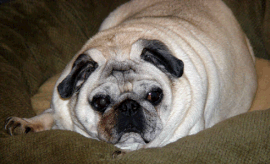
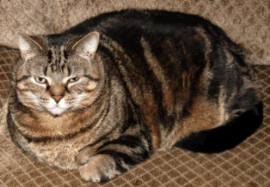
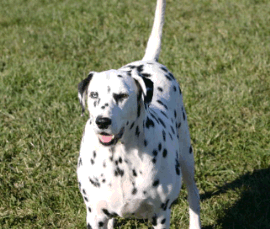
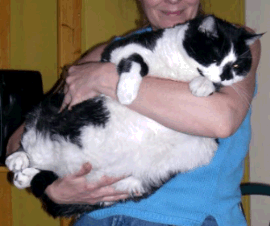
(Photocredit all four photos: Morguefile.com)
|
- Arthritis
The over-weight animal has extra unneeded stress on his or her joints including the disks of the vertebrae. This extra stress leads to the progression of joint degeneration and creates more pain. Weight management alone decreases and can even eliminate the need for arthritis medications. The problem is compounded as joint pain leads to yet poorer mobility which in turn leads to greater obesity.
- Respiratory Compromise
The obese pet has a good inch or two of fat forming a constricting jacket around its chest. This makes the pet less able to take deep breath as more work is required to move the muscles of respiration. Areas of the lung cannot fully inflate and coughing results. The pet also over-heats more easily. Many cases of tracheal collapse and chronic cough can be managed with only weight loss.
- Diabetes Mellitus
Extra body fat leads to insulin resistance in cats just as it does in humans. In fact, obese cats have been found to have a 50% decrease in insulin sensitivity. Weight management is especially important in decreasing a cat’s risk for the development of diabetes mellitus.
- Hepatic Lipidosis
When an overweight cat goes off food or partially off food because of illness or psychological stress, body fat is mobilized to provide calories. Unfortunately, the cat’s liver was not designed to handle a large amount of body fat for processing. The liver becomes infiltrated with fat and fails. A stress that might have been relatively minor, such as a cold, becomes a life threatening disaster.
- Reduced Life Span
A study of age-matched Labrador retrievers found that dogs kept on the slender side of normal lived a median of 2.5 years longer than their overweight counterparts.
- Unwillingness to accept therapeutic diets
If the pet should develop a condition where a therapeutic diet is of great benefit, the pet that has been maintained on a diet of primarily table scraps may be unwilling to accept commercial pet food of any kind much less a food modified to be beneficial for a specific disease process. This will hamper treatment.
- Increased Surgical/Anesthetic Risk
Obesity poses an extra anesthetic risk in that drug dosing becomes less accurate. (It is hard to estimate a patient’s lean body mass for drug dosing if it is encased in a fat suit). Further, anesthesia is inherently suppressive to respiration and adding a constrictive jacket of fat as mentioned only serves to make proper air exchange more challenging. And still further, surgery in the abdomen is hampered by the slippery nature of the extra fat as well as difficulty visualizing all the normal structures through the copious fat deposits that have accumulated. One never knows when a pet will require an emergency surgery (to say nothing of regular teeth cleanings).
|
So is the enjoyment of all those extra treats really worth it?
HOW DID MY PET GET SO FAT WHEN HE DOESN’T REALLY EAT THAT MUCH?
One might think weight management might be easier for a pet than it is for a human. After all, the pet relies completely on someone else for feeding and exercise so it should follow that if the humans in control can regulate feeding and exercise, the pet should lose weight. It seems like this would be true but, as with humans, there is tremendous individuality with how different pets store the food they have eaten. Beyond this, sometimes it is hard to know what all a pet is eating or the owner may not have a good sense for how much should be fed. Here are some factors involved:
|
- A cup of food depends on the cup
When food packages refer to a certain number of cups of kibble being appropriate for a certain pet body weight, they are referring to an actual measuring cup. This may seem obvious but many mugs, coffee cups, and other scooping cups may not actually be equal to a cup measure. If you do not have a cup measure, you can often get one from your veterinarian’s office as most manufacturers of reducing diets for pets provide free cup measures for accuracy.
CONSIDER MEASURING FOOD WITH A GRAM SCALE.
THIS A FAR MORE ACCURATE WAY OF MEASURING FOOD AMOUNTS COMPARED TO CUP MEASURES.
|
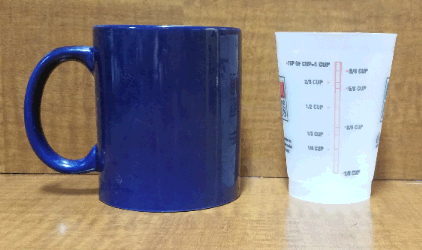 (original graphic by marvistavet.com) (original graphic by marvistavet.com) |
EVALUATION BY BODY CONDITION SCORE
Sometimes it is hard to recognize that your pet is overweight as the weight gain has come on gradually or it is hard to actually accept that your pet is more than just a little chubby and is now fully obese. To assist in this evaluation, body condition scoring has been developed and is actually fairly easy to accomplish. There are two scoring systems: a 5 point system (where 3 out of 5 is considered optimal) and a 9 point system where 4-5 out of 9 is considered optimal). To evaluate your pet, feel for a small amount of padding over the ribs. It should be possible to feel the ribs and there should be a small tuck in the belly where the hind legs meet the body.
WHAT CAN BE DONE: DIET AND EXERCISE
This sounds simple but in fact when one simply tries to cut back on food, it just does not seem to work. Begging for food can result plus simply reducing the amount of a regular diet (one not meant for weight loss), can lead to deficiency in vitamins or minerals. As with humans, a more formal approach seems to work best. This means feeding a prescription diet made for weight loss (typically “lite” or “less active” diets are meant to prevent weight gain, not actually cause weight loss), feeding a measured amount, and coming in for regular weigh-ins at the vet’s office.
This means:
- There must be control over what the obese pet eats. Easy enough if there is only one pet and roaming is not allowed but trickier if there is more than one pet in the home. Use your ingenuity to feed the pets separately.
- Feed in meals. Leaving food out encourages snacking plus feeding in meals makes it easier to feed multiple pets different foods or different amounts of food.
- Be committed to regular weigh-ins. Know what the goal weight is and how long it should take to reach this goal/or how to tell if the pet is on target. It is important not to try to go too fast. If the weight loss is not on track, sometimes it is necessary to feed more rather than less. Your veterinarian may need to be in contact with the clinical nutritionists at the pet food company so as to make the best recommendations.
- Consider interactive toys that can be used when you are not home or where your own participation is minimal.
Be sure to rule out health issues that might specifically cause obesity as an initial step in obesity management.
"DO IT YOURSELF" WITHOUT A THERAPEUTIC DIET
Therapeutic diets are available only through veterinary offices and through authorized diet delivery services. These types of foods are likely to cost more and/or be less convenient to obtain than foods available at the grocery store or pet supply store so a pet owner may be tempted to "DIY" weight loss. As discussed, weight loss often turns out to be more complicated than one imagined. If the problem is simply cutting out treats, adding more exercise or in some way changing the human behavior that led to the pet's weight condition, then you may have a good chance at getting results. If the problem is the pet's metabolism then it may be an uphill battle. Regular weigh-ins are still crucial and the pet should not lose more than 2% of his or her body weight per week. High fiber diets tend to work best for dogs while low-carbohydrate diets tend to work better for cats.
NUTRIGENOMICS
 |
 |
Nutrigenomics is the study of how food influences the expression of genes and how genes influence the disposition of nutrients. This field is still in its infancy but is rapidly developing such that one day nutritional programs can be designed based on one's own individual genetic composition. We all have seen how different people metabolize the same food in completely different ways and how changing to a similar diet can have varying effects among individuals. |
There is presently only one diet on the market that uses principles of nutrigenomics to activate genes of fat-burning and create a fat burning metabolism and that is Metabolic Diet made by Hills®. Their system employs dry food, canned food and treats in any combination but in amounts determined by the pet's initial body composition and calculated healthy weight. This approach has not been found to be more effective with weight loss over the more traditional high fiber diets diets but at the end of the program when the desired weight has been achieved, the animals on the nutrigenomic diet had been metabolically altered to reduce storage of consumed fat.
|
 |
 |
 |
Pets on traditional weight loss plans were not metabolically altered and were still "fat storers" and potentially ready to regain the fat stores they had worked so hard to lose. Metabolic Diet is for sale only through veterinarians so if you are interested in this concept, ask your vet about trying the system. |
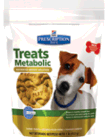 |

Page posted: 4/16/2010
Page last updated: 2/16/2022
|